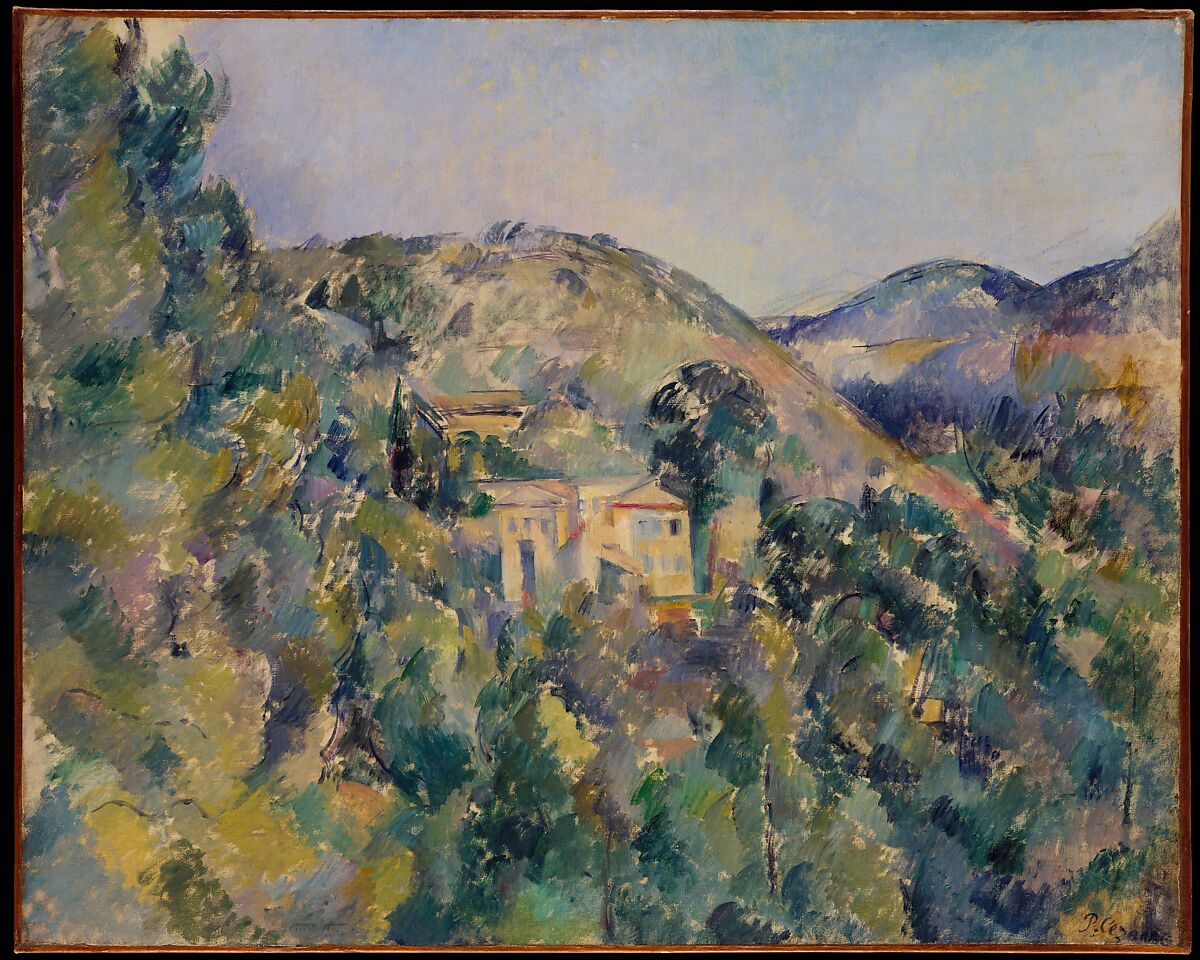Emily Sonke
Introduction
to Art History
Breaking
the Salon:
Impressionist and
Post-Impressionist Landscape Painting in the 1880s-1890s
Vincent Van Gogh and Paul Gauguin were not Impressionists,
but they worked at the same time and in the same area as the French
Impressionists. They painted more spiritual or internal interpretations of
their subjects. Though Van Gogh and Gauguin’s styles differed from each other
and the Impressionist movement with their bold colors and thick brushstrokes,
both artists drew inspiration from Impressionism and painted similar topics. The
Impressionist movement was a revolt against the Salon, the official
exhibition in France that brought fame to artists who embraced the Neo-classical
style. Impressionism and Post-Impressionism alike pushed the boundaries of
European art further than they had gone up to that point. Both Van Gogh and
Gauguin, without copying, understood absorbed inspiration from the great men
around them while developing their own styles. While Van Gogh would die
tragically in 1890 and Gauguin would move his career to Tahiti a year later in
1891, their overlap with Monet, Pissarro, Cézanne, and Renoir in the sphere of
French landscape painting was truly awe-inspiring.
Auguste Renoir (French,
1841-1919)
Landscape,
1889
Watercolor on off-white laid
paper
1975.1.691
Auguste Renoir’s Landscape is a watercolor sketch
that the artist made in Aix-en-Provence, France, during the summer of 1889. His
use of bold colors and visible brushstrokes is a distinct rejection of the
Salon’s restrictions. While this is just a preliminary sketch, it is still
representative of Renoir’s overall style and finished artwork. This watercolor shows
us a glimpse of Renoir's process and how he saw the landscapes he spent time
in.
Vincent Van Gogh (Dutch,
1853-1890)
Cypresses, 1889
Oil on canvas
49.30
Cypress trees are a recurring theme in Van Gogh’s work.
Their dark, organic shapes add visual interest and contrast to his usually
bright paintings. Van Gogh saw cypress trees as characteristic of Provence,
France, a region where he spent the last two and a half years of his life. Van
Gogh’s use of swirling skies is a staple in his landscapes. His bright colors relate
him to the other painters in the era, but his thick, impasto brushstrokes set
him apart from the Impressionist movement.
Paul Cézanne (French,
1839-1906)
View of the Domaine
Saint-Joseph, late 1880s
Oil on canvas
13.66
Cézanne’s View of the Domaine Saint-Joseph was
painted near his beloved hometown of Aix-en-Provence, France. It depicts a view
of the Jesuit estate Saint-Joseph. One can see many patches of canvas poking
through the paint, demonstrating Cézanne’s quick, loose painting techniques. Despite
the unfinished look, this painting was one of the few Cézanne considered truly
finished, as evidenced by his rare signature in the bottom right corner.
Claude Monet (French,
1840-1926)
View of Vétheuil,
1880
Oil on canvas
56.135.1
Monet painted View of Vétheuil from an island in the
middle of the Seine River, just north of Paris. The water is hidden by the dark
line of poplar trees that separate the town from the grass. In this way, Monet
painted the perspective that he saw, even though it does not reflect exact
reality. In this painting, Monet focused on the way the light played across the
field and interacted with the trees.
Vincent Van Gogh (Dutch,
1853-1890)
Wheat Field with Cypresses,
1889
Oil on Canvas
1993.132
Van Gogh painted Wheat Field with Cypresses around
the same time as Cypresses, during his yearlong stay at the mental
asylum in Saint-Rémy, France. This painting is one of three of the same subject
that Van Gogh sent to his brother Theo and his mother and sister. Wheat
Field with Cypresses is part of a study Van Gogh did on cypress trees,
including the two other versions of the same painting, multiple pen and ink
drawings, Cypresses, and Cypresses and Two Women.
Camille Pissarro (French,
1830-1903)
Poplars, Eragny,
1895
Oil on canvas
67.187.93
Pissarro painted Poplars, Eragny in the small village
of Eragny, where he lived from 1884 until his death in 1903. This painting is
of a corner in Pissarro’s garden and the landscape beyond it, and it
demonstrates his skill in depicting the effects of light and shadow on a wooded
landscape. His small, loose brushstrokes are typical of the Impressionist
movement. Vibrant landscapes and village life were frequent topics in
Pissarro’s artwork.
Paul Gaugin (French,
1848-1903)
A Farm in Brittany,
ca. 1894
Oil on canvas
54.143.2
Gauguin painted A Farm in Brittany during his final
visit to that region in France. Breton culture was steeped in Celtic paganism,
and that mystique attracted Gauguin, who was drawn to the primitive and the
exotic. The painting is reminiscent of Gauguin’s early impressionist style, but
the color palette draws more from his experiences and artworks in Tahiti. Gauguin
visited Brittany five times over the course of his painting career.







No comments:
Post a Comment